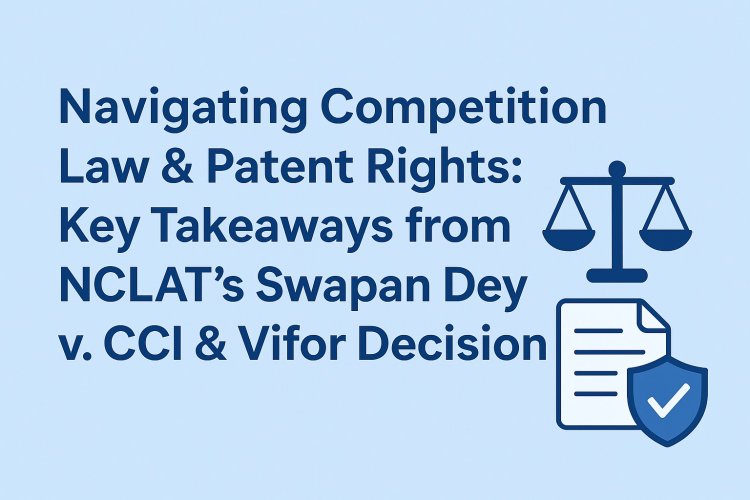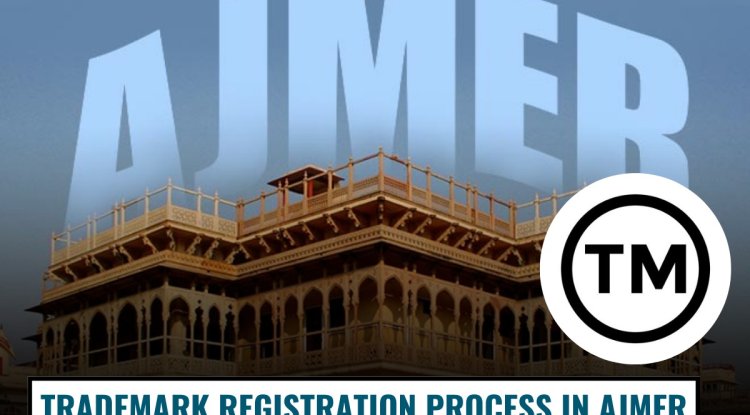Navigating Competition Law & Patent Rights: Key Takeaways from NCLAT’s Swapan Dey v. CCI & Vifor Decision
This blog analyzes the NCLAT’s ruling in Swapan Dey v. CCI & Vifor International, highlighting the critical interplay between competition law and patent rights in India’s pharmaceutical sector. It explains why the tribunal upheld CCI’s closure of anti-competitive allegations, reaffirming that conduct arising from valid patent rights must primarily be evaluated under the Patents Act. The discussion underscores how Indian jurisprudence seeks to balance innovation incentives with public interest, accessibility, and market competition in essential medicines.

Introduction
In recent years, the intricate relationship between competition law and patent rights has gained significant attention, especially in the pharmaceutical sector. A notable case that illuminates this intersection is the National Company Law Appellate Tribunal (NCLAT) decision in Swapan Dey v. Competition Commission of India (CCI) & Vifor International (AG), Competition Appeal (AT) No. 5 of 2023, delivered on October 30, 2025. This case centres around allegations of anti-competitive conduct in relation to Ferric Carboxymaltose (FCM) injections used for treating iron deficiency anaemia. Swapan Dey, the appellant and CEO of a hospital providing free dialysis through the Pradhan Mantri National Dialysis Program (PMNDP), reported concerns to the CCI regarding Vifor International’s practices. He claimed that Vifor, a Swiss pharmaceutical company, engaged in anti-competitive behaviour by restricting the accessibility and affordability of FCM through limited licensing agreements with Emcure (a manufacturer) and Lupin (an importer and distributor). On investigation, however, the CCI, on October 25, 2022, decided to close the case under Section 26(2) of the Competition Act, finding no prima facie contravention of competition laws. This prompted Swapan Dey to challenge the CCI's closure decision before the NCLAT on the grounds that Vifor's conduct warranted scrutiny under Sections 3 and 4 of the Competition Act, 2002.
Core Legal Issues at Hand
The central issue raised in this case was whether the CCI had jurisdiction over Vifor’s licensing and pricing conduct concerning a patented drug during the patent’s validity. Swapan Dey argued that Vifor's licensing structure effectively limited market competition, keeping drug prices high and restricting patient access. Vifor, for its part, contended that its licensing agreements and pricing practices were governed by the Patents Act, 1970 and that Section 3(5) of the Competition Act, 2002 specifically preserves the rights of patent holders. The relevant patent for FCM had been granted on June 25, 2008, and expired on October 21, 2023, leading Vifor to assert that CCI should not intervene in what was essentially a lawful exercise of its patent rights.
To know more about his you can follow the link below:
The CCI's Standpoint
The CCI approached the matter by examining the interplay between competition law and patent law, concluding that there was no prima facie case against Vifor. It noted that no evidence indicated that Vifor had imposed unreasonable conditions on its licensees or restricted competition in a manner that would warrant regulatory action. Instead, the CCI acknowledged the evolving jurisprudence regarding the relationship between competition and patent rights, referencing previous court decisions that affirmed the supremacy of the Patents Act, 1970 in matters concerning the exercise of patent rights.
NCLAT's Analysis and Decision
Upon appeal, the NCLAT carefully considered the implications of the Patents Act, 1970 alongside the provisions of the Competition Act, 2002. It reiterated that Section 3(5) protects reasonable conditions within licensing agreements where patents are involved. The tribunal emphasized the importance of the Delhi High Court Division Bench decision in Telefonaktiebolaget LM Ericsson (PUBL) v. CCI, (2023 SCC OnLine Del 4078-LPA 247/2016), which established that the rights of patent holders should generally prevail in disputes concerning the exercise of those rights. In its decision, the NCLAT held that the CCI lacked the authority to investigate the allegations relating to Vifor's conduct as they pertained to the exercise of patent rights. The Tribunal found that the likely impact of the patent's expiration post-October 2023 would enhance market access for alternative suppliers, potentially increasing competition in the sector. As a result, the NCLAT dismissed the appeal and upheld the CCI's closure of the case, emphasizing that complaints regarding licensing and pricing issues in connection to patent rights should be scrutinized within the framework of the Patents Act, 1970 rather than under competition law.
Practical Implications and Broader Context
The implications of this judgment are significant for both the pharmaceutical industry and regulatory practice in India. First and foremost, it outlines a clear legal boundary regarding the jurisdiction of the CCI when it comes to matters that involve the exercise of rights conferred by patents. Companies in the pharmaceutical sector may take stock of this decision and assess their licensing practices to ensure compliance with patent law while remaining aware of the potential competition implications. Moreover, it reinforces the principle that issues related to licensing agreements and patent enforcement should be dealt with primarily through the mechanisms designed within patent law, such as those addressing compulsory licensing and patent invalidation, rather than through competition law. In a broader context, this case opens up discussions on how best to balance patent rights with the need for competition in the pharmaceutical sector. While patent protection is crucial for fostering innovation, it must be tempered with considerations for public health and access to essential medicines. As the debate continues, stakeholders, including lawmakers, regulatory bodies, and healthcare providers, must work collaboratively to ensure that both innovation and patient welfare remain priorities.
Conclusion
The NCLAT's decision underscores the complex relationship between patent rights and competition law. By affirming that the exercise of patent rights falls primarily under the jurisdiction of patent law, the tribunal has provided clarity for future cases involving similar issues. As the pharmaceutical landscape continues to evolve, the critical balance between protecting intellectual property and ensuring fair competition remains a pressing concern. This case serves as a pivotal reference point for navigating the challenges that arise at this intersection, ensuring that the drive for innovation does not come at the expense of patient access to necessary treatments. Moving forward, it will be essential for industry stakeholders to remain vigilant and proactive in aligning their strategies with the evolving legal landscape, ensuring a responsible approach to both competition and innovation in pharmaceuticals.












